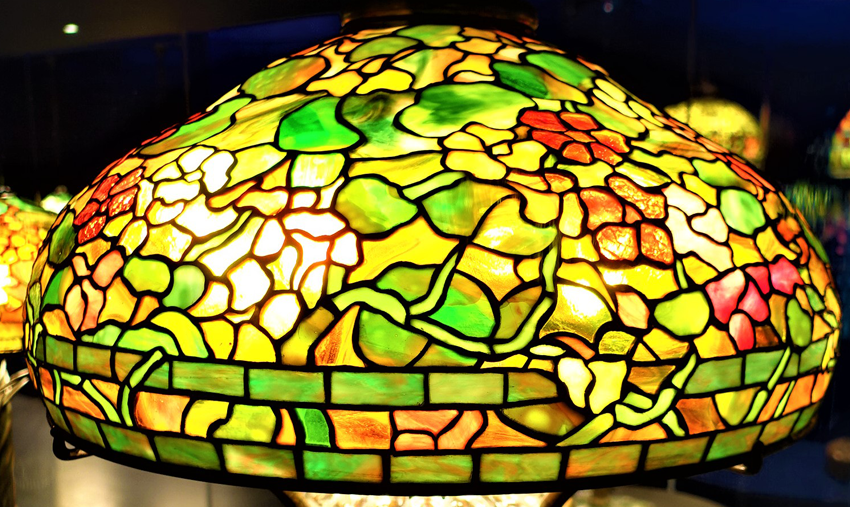Ms. Driscoll’s Many Colors
A point of Clara-fication on a design legend

We’ll never be able to correct all the history books that covered up the amazing accomplishments of women. But thanks to some sleuthing historians, we’re learning more about the Clara Driscolls of the world.
Driscoll’s role in the creation of the iconic Tiffany lamps came to light when researchers found letters—many, many letters—that she had written to family while working at the studios between 1888 and 1908.
Founded in 1885, the Tiffany Glass Studios specialized in the artistic applications of stained glass windows, mosaics, and later, lamps. Louis C. Tiffany was known for inventing and trademarking the iridescent, textured “Favrile” glass, and was known as an artistic genius in the Art Nouveau era. His lamps sold for between $400 and $500 in the early 1900s–some $12,500 to $15,700 in today’s money (in 1914, you could buy an entire Ford Model T for $440).
Even so, everybody who was anybody wanted these lamps, and Louis Tiffany was happy to oblige. But he could not and did not design them on his own.
Clara’s story
Moving to New York after her graduation from what is now the Cleveland Art Institute, Clara Driscoll became the head of the Women’s Glass Cutting Department in 1888. She was a good catch for Tiffany: smart and good with people, with a great eye for detail and exceptional design skills.
In a letter dated June 29, 1898, Driscoll recounts a concept she had for a butterfly lamp inspired by a scene from her Ohio hometown—yellow butterflies flying over a field of wild primroses. She looked up to Mr. Tiffany, so she was excited when he loved the design and encouraged her to run with it.
The following year, she wrote about her idea for what would be one of Tiffany’s trademark designs: The Dragonfly lamp, with its elaborate base and mosaic of the swarming insects. Tiffany loved the design so much that he showed it at the Paris World’s Fair in 1900. The design got a bronze medal—it was the one and only instance, ever, that gave credit to Driscoll for her design.
In further letters, she takes credit for still more beloved designs: Poppy, Fern, and Wisteria, the latter so popular that she had to delegate some finishing to the men’s department. (She was not happy with some of their color choices.)
The Tiffany Women
Though clearly a talented designer, Driscoll’s main job was to oversee a team of 35 “Tiffany Women”–all of them unmarried or widowed, thanks to the working-wife taboo–on the glass floor. Most were art-school graduates, with exceptional creativity and eye-for-detail that was essential to Tiffany’s success. And the big boss knew it: LCT believed that women’s dainty fingers were better for glass cutting, and that they had a better sense of color (clearly Driscoll agreed). Plus, the women’s department never went on strike or threatened to strike like the men did.
The Tiffany women were responsible for almost every facet of design and fabrication–except soldering, because of course women couldn’t be trusted with the hot irons. Divided into teams of cutters and selectors, the women were largely responsible for many of the beautiful lamps that are… well, they’re selling for more than $3 million nowadays.
In 1909, Driscoll–who had left Tiffany twice during previous marriages–rode off into the sunset for good, marrying the man she’d stay with for 35 years, until death did them part. As for her retirement, it was just as well: By 1913, with Art Moderne and Expressionism replacing Art Nouveau in the public imagination, Tiffany stopped making lamps altogether.
Driscoll’s occupation was listed as “housewife” on her 1944 death certificate, as the New York Times noted last year in its “Overlooked No More” feature. And but for her prolific correspondence–and those sleuthing historians–that’s pretty much all we’d know about her today.
